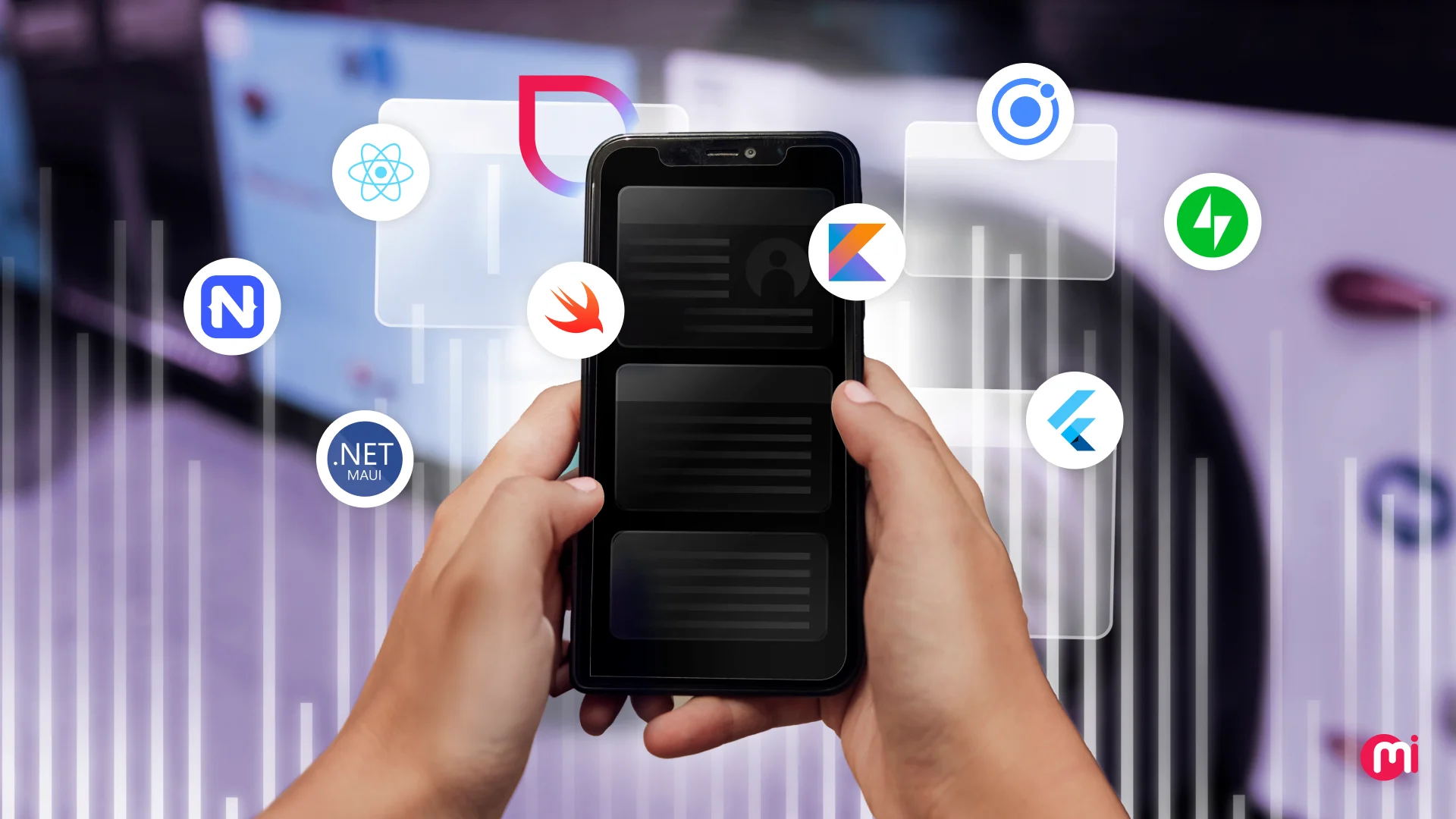Top React Native Animation Libraries and UI Components to Use in 2024
- Mobile
- August 14, 2023
When it comes to enhancing user engagement and interactions in a mobile app, developers create appealing user interfaces and use animations. Since users love using animations while using an app, these can boost user experience more. The same thought goes for react native app development also.
A well-crafted UI and animations of some user activities can help boost user engagement within an app. Hence, you should use the UI component and animation libraries while working with the React Native platform. This blog discusses some major React Native UI Component and Animation libraries that help create a better user experience. Let’s explore them below!
12 Best React Native Animation Libraries
Here are the top animation libraries that you can use in your next react native app development project:
1. React Native Animatable
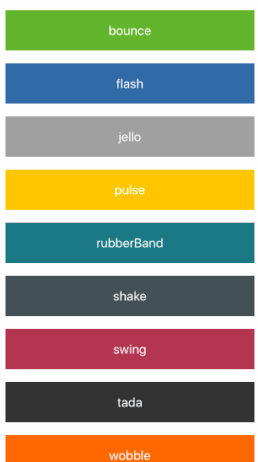
React Native Animatable is one of the most recognized animation libraries. When it comes to creating micro-interactions in a react native application, it is one of the best libraries to go for. This library provides declarative wrappers. You can use them for animating your react native elements, generic transition, looping, and more using an easy-to-use API.
In many apps, you can find constant bouncing, swipes, slides, and so on. React Native Animatable provides properly animated and preconfigured elements to UI experts. Hence, with it, you don’t have to rewrite the generally used animations on your own. It has 60+ in-built animations.
2. React Native Reanimated
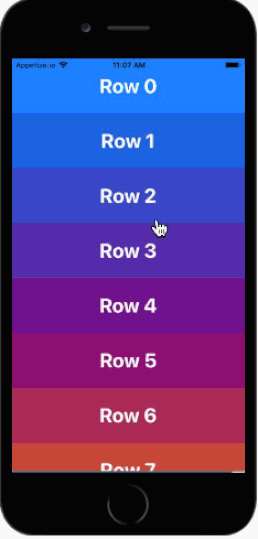
This library provides a complete and extensive, low-level abstraction for building animated library API on top. Moreover, its in-built Animated API is written from the beginning to offer great flexibility regarding gesture-based interactions alongside making animations in apps. To make such interactions, this library works perfectly with the Gesture Handler library.
React Native Reanimated has complete native assistance and creates animations directly on the native thread rather than the JavaScript thread. This is backward compatible. Hence, you don’t need to change massive amounts of code or re-build the animation for a particular React Native core element if you want to explore this library and move from Animated API.
This animation library is developed and handled actively by developers at Expo and Software Mansion. Moreover, it’s great for low-grade devices as well.
3. Fluid Transitions for React Navigation
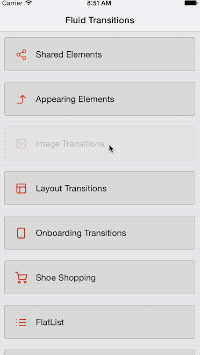
This one is a JavaScript library that is used for executing some fluid transitions between components. This can be implemented while navigating with React Navigation library. It executes a new navigator named Fluid Navigator.
Fluid Navigator supplants StackNavigator from React Navigation. And this new navigator shares nearly a similar API and configuration procedure like the navigator from the navigation library. Moreover, it helps make customized transitions and facilitates gestures for navigation. This library helps do the shared transitions between similar elements when every element belongs to a different navigating screen.
4. React Native Shared Element
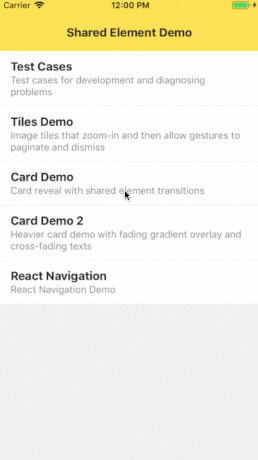
This library offers some native building blocks that help perform shared element changes. Moreover, it gives some primitives to improve the creation of custom changes. These transitions are made accessible by core React Native API.
This animation library usually fixes many issues through its native application method. Some issues include Image resizeMode transitions, Cross-fade transitions, No flickering, shadow transition, ScrollView clipping, and GPU & CPU interface. This library contains an individual version that supports shared shifts between navigators with React Navigation library named React Navigation Shared Element.
5. Pose
This physics-based react native animation library enables to make animations seamlessly. This library works slightly differently. It chooses an animation automatically depending on the mentioned property’s name.
Moreover, it supports unmounts and mounts animations and gestures like a React element. You can find this library available for Vue and the React.JS library also.
6. Lottie
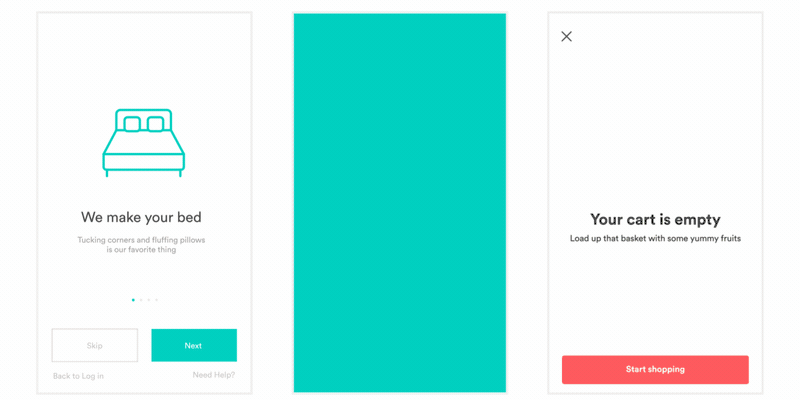
This animation library is formed by Airbnb that deciphers After-Effect animations into a JSON file. You can both export and utilize this file in your application.
Moreover, you can use Lottie on React Native, Web, Windows, Android, and iOS. You should install a Lottie-react-native wrapper for using Lottie in React Native.
7. React Native Tabbar Interaction
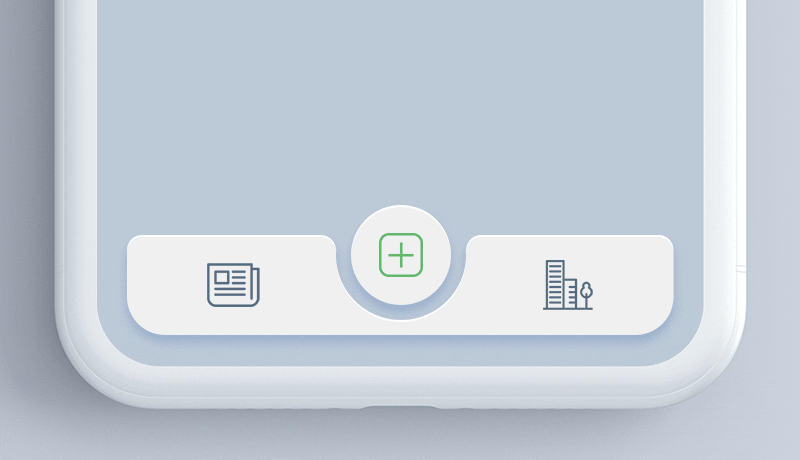
MindInventory created Tabbar Interaction with React Native and the latest of Google’s Material Design. Tabbar is made using SVG elements. The elements that are assembled together to create Tabbar include:
- Tabbar item image
- Hollow semi circular Tabbar
- Animation in the Tabbar and circular tab item during switching
- Circular Tabbar Item
Tabbar uses animation while switching between two tabs. This is what makes it more appealing.
8. React Spring
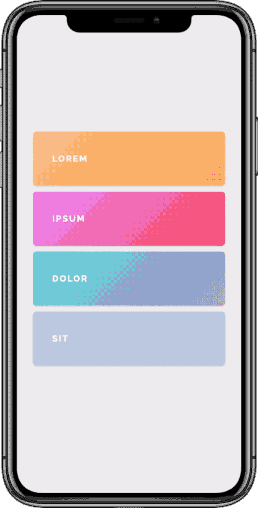
This is another easy-to-use, physics-based animation library. Being a cross-platform library, it supports react-native-web, react-native, web, and other platforms. React Spring has its API available in a pattern of plug-n-play React Hooks.
This spring-physics-based animation library covers your most UI animation needs. If you need flexible tools for casting your concepts into moving interfaces, just go for it. React Spring brings a modern animation method. It connects both declarative and imperative react motions.
9. React Native SVG Animations
This animation library helps you showcase a scalable vector graphic image in the form of animation. The library has many wrapper elements to explain the animation.
10. React Native Redash
This library contains a great gesture handler toolbelt. You can use it to provide a hassle-free and seamless user experience.
11. React Native GL Model View
This animation library helps you import Wavefront(.OBJ) files and showcase, rotate, scale, or animate 3D textured models.
12. React Native Flip Card
This animation library is basically a card element that contains a flip motion for React Native in iOS or Android.
8 Best React Native UI Component Libraries
Here are the best UI Component libraries that you can use in your react native app development:
1. React Native Maps
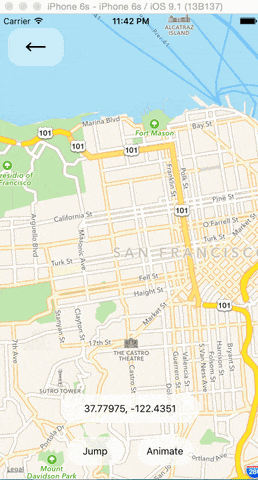
If you want to explore more with maps, just go for React Native Maps. This library provides tailored map elements for both iOS and Android. Developers are allowed to tailor map style, alter the map view region, customize the markers, and overlay other components on a map.
Using an animated API, you can even animate the zoom and positioning of your map and develop a better user experience.
2. NativeBase
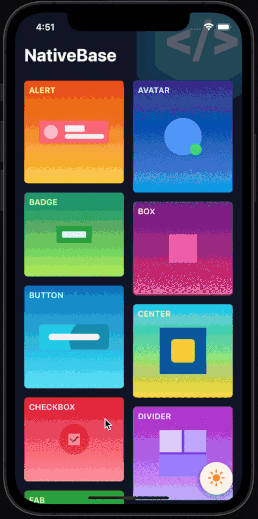
For newbie React Native developers, NativeBase is great to start creating apps. Some open-source projects of this library include a tutorial app, a Twitter Clone app, and a Native starter app. You may get a premium starter kit from this library also.
Being a recognized UI component library, NativeBase has been popular in offering mobile-first and accessible elements. Using this library, you can create and maintain a stable design framework across both web and mobile platforms. Further, it provides a tailored list of elements for React Native UI development.
This UI component library also supports accessibility with React Native ARIA and themeable design systems that are optimized for both dark and light modes.
If you need toast for elements and advanced elements like row, skeleton, and column for layout alongside important elements like icons, overlays, flex, checkbox, and buttons, NativeBase is the right choice. Styled System has powered NativeBase for helping developers create customized UI elements.
3. React Native Elements
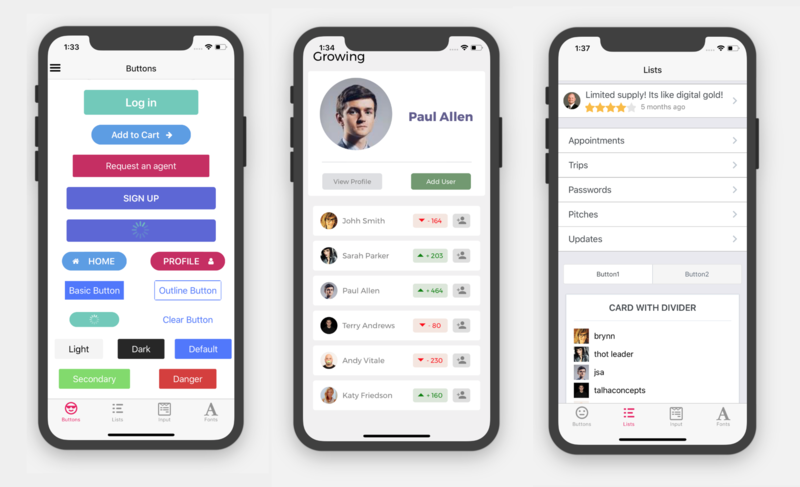
This is an easier to personalize, cross-platform UI component library that contains several contributed elements. It supports customized themes. Moreover, it incorporates elements like badges, pricing, avatars, star ratings, divider, social icon buttons, and overlay.
React Native Elements does not just aim to offer an all-inclusive UI kit for React Native app development but also reduces the hassle of putting packages together by provider developers a readymade kit with a stable API and look and feel as well.
4. React Native Camera
React Native Camera or RN Camera is a great library that helps communicate with your device camera. It allows developers to use some easy functions without thinking about the native code.
The camera element of React Native supports barcode scanning, face identification, photographs, text recognition, and videos for both Android and iOS.
5. React Native Paper
This cross-platform, open-source library provides 30+ production-ready and customizable elements that follow the Material Design rules. It gives complete support for both dark and light themes. Moreover, it enables you to smoothly move between distinct themes.
In case you have tailored the theme, just utilize the Appearance API of React Native for applying theme moving based on device settings. Paper also enables you to add easy, clean, and simply customizable UI elements to your development as fast as possible so you can be assured to get the remaining MVP in place.
6. Bit for React Native
The Bit is not a library but a great tool for creating component-driven apps. This extensible toolchain is useful for systems that are easier to understand, quicker to build, simpler to collaborate on, and easier to examine and maintain.
You can use Bit in your project for tracking elements and also export them to the virtual monorepo of Bit, i.e. Bit.dev. This makes every element accessible and usable for other projects as well. Developers can independently create and maintain them.
They can compose as many apps according to their need. Moreover, they can remove or add elements from apps to modify their functionality as well. With Bit, they don’t need to establish a dev environment for making some changes.
7. React Native Gifted Chat
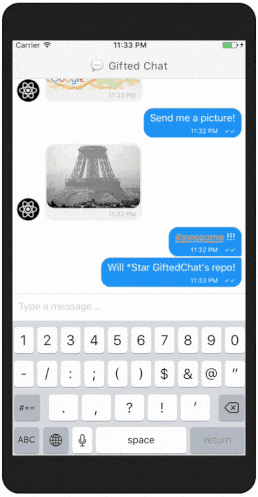
Looking for a complete chat UI library for your React Native app? Then, simply go for React Native Gifted Chat. Chat is already a famous feature of several apps. With React Native Gifted Chat, this feature or functionality becomes easier to execute. This library also incorporates support for Redux.
Every element offered by this library can be customized easily. All elements are written in TypeScript. Such elements include clickable links, copying messages to the clipboard, loading previous messages, multiple text input, and attachment options, making avatars for profiles, and improving the bot functionality.
8. React Native Snap Carousel
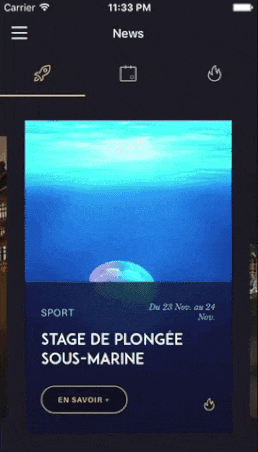
React Native allows several ways to showcase a bunch of photos in a gallery view. A Carousel is a famous technique to accomplish the same. It features multiple layouts, previews, performant management of a significant number of products, parallax images, and more.
Carousel is compatible with both iOS and Android. It helps the user cycle through a collection of images that can be shown both vertically and horizontally. In short, it helps developers show their content on different mobile gadgets.
When it comes to including stylish carousels or sliders in your application, go for React Native Snap Carousel. This UI library consists of many tips that help in performance optimization; it is properly documented and contains some other useful features as well.
Snap Carousel contains a wide API comprising property and multiple plug-n-use layout patterns. Moreover, it enables developers to execute animations and customized interpolations.
Closing Thoughts
The primary aim of the aforesaid React Native UI component and animation libraries is to help developers make user-friendly interfaces, animation, and changes in an app. Most of these libraries are easily customizable and contain some amazing built-in features. If you are going to develop a react native app, choose any of the aforesaid libraries to boost user experience.







